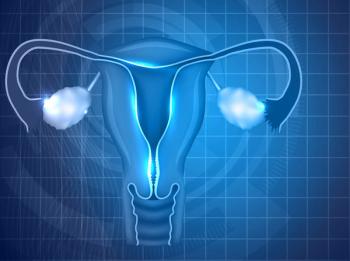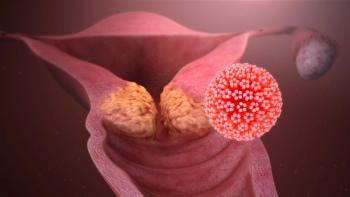
Japan’s MHLW Receives sNDA for T-DXd Combo in Frontline HER2+ Breast Cancer
Data from the phase 3 DESTINY-Breast09 trial presented at the 2025 ASCO Annual Meeting formed the basis of the supplemental NDA.
Japan’s Ministry of Health, Labour and Welfare has received a supplemental new drug application (NDA) for fam-trastuzumab deruxtecan-nxki (T-DXd; Enhertu) plus pertuzumab (Perjeta) as a first-line treatment for patients with HER2-positive unresectable or recurrent breast cancer, according to a news release from the drug’s developer, Daiichi Sankyo.1
Forming the basis of the supplemental NDA were data from the phase 3 DESTINY-Breast09 trial (NCT04784715) presented during a late breaking session at the
Efficacy data revealed that at a data cutoff date of February 26, 2025, an interim analysis criterion for superiority was already met, despite there being only a 38% maturity (P < .00043). The median progression-free survival (PFS) per blinded independent central review (BICR) was 40.7 months (95% CI, 36.5-not calculable [NC]) with the T-DXd–based combination vs 26.9 months (95% CI, 21.8-NC) with standard of care, showing a median difference of 13.8 months (HR, 0.56; 95% CI, 0.44-0.71; P < .00001). The respective 6-, 12-, and 24-month PFS rates were 93.0% (95% CI, 89.9%-95.2%) vs 87.8% (95% CI, 84.0%-90.7%), 85.9% (95% CI, 81.9%-89.1%) vs 72.4% (95% CI, 67.4%-76.8%), and 70.1% (95% CI, 64.8%-74.8%) vs 52.1% (95% CI, 46.4%-57.5%).
The median PFS per investigator assessment between the investigational and control arms was 40.7 months (95% CI, 36.5-NC) vs 20.7 months (95% CI, 17.3-23.5), respectively (HR, 0.49; 95% CI, 0.39-0.61; P < .00001), showing a 20-month difference. Subgroup analyses revealed that T-DXd displayed favorable outcomes across patient groups, with particular benefit observed among patients with de novo treatment status (HR, 0.49; 95% CI, 0.35-0.70), hormone receptor–negative status (HR, 0.52; 95% CI, 0.37-0.73), and PIK3CA mutational status (HR, 0.52; 95% CI, 0.35-0.77).
Additionally, the confirmed objective response rate (ORR) with T-DXd plus pertuzumab was 85.1% (95% CI, 81.2%-88.5%) vs 78.6% (95% CI, 74.1%-82.5%) with standard-of-care chemotherapy, with respective complete response rates of 15.1% and 8.5%. The median duration of response (DOR) was 39.2 months (95% CI, 35.1-NC) and 26.4 months (95% CI, 22.3-NC) in the respective arms, with 73.3% and 54.9% of the respective arms remaining in response after 24 months of treatment start.
At a maturity of approximately 16%, an overall survival (OS) trend favored the T-DXd combination arm vs the standard-of-care arm (HR, 0.84; 95% CI, 0.59-1.19).
“In DESTINY-Breast09, [T-DXd] plus pertuzumab demonstrated a median [PFS] of more than 3 years, which represents an impressive improvement over the current standard of care,” said Yuki Abe, PhD, head of the Research and Development Division in Japan and head of research at Daiichi Sankyo, in the news release.1 “Following the recent approval of [T-DXd] in Japan for the treatment of HER2-low or HER2-ultralow metastatic breast cancer, this new submission of [T-DXd] plus pertuzumab for the first-line treatment of patients with HER2-positive disease underscores the commitment of Daiichi Sankyo to bring [T-DXd] to as many patients as possible in this region across certain subtypes of metastatic breast cancer.”
The global, open-label phase 3 trial enrolled patients with HER2-positive metastatic breast cancer and randomly assigned them 1:1:1 to receive T-DXd alone, T-DXd with pertuzumab, or taxane, trastuzumab (Herceptin), and pertuzumab. Patients were stratified by prior treatment status, hormone receptor status, and PIK3CA mutational status.
The primary end point of the trial was PFS per BICR in the T-DXd monotherapy and combination arms. Secondary end points included PFS per investigator assessment, OS, ORR, DOR, pharmacokinetics, and safety.
Any treatment-emergent adverse event (TEAE) occurred in 99.7% of the T-DXd combination arm and 99.0% of the standard-of-care arm; potentially treatment-related grade 3 or higher TEAEs occurred in 54.9% and 52.4% of the respective arms.
Treatment discontinuation, dose interruptions, and dose reductions due to TEAEs occurred in 20.7%, 68.8%, and 45.9% of the T-DXd group and 28.3%, 49.0%, and 19.9% of the standard-of-care group; TEAEs led to death in 3.4% and 0.8%, respectively, with 1.3% and 0.3% possibly being treatment related.
In September 2025, the FDA
References
- ENHERTU plus pertuzumab supplemental new drug application submitted in Japan as first-line therapy for patients with HER2 positive metastatic breast cancer. News release. Daiichi Sankyo. October 7, 2025. Accessed October 8, 2025. https://tinyurl.com/526rxhzb
- Tolaney SM, Jiang Z, Zhang Q, et al. Trastuzumab deruxtecan (T-DXd) + pertuzumab (P) vs taxane + trastuzumab + pertuzumab (THP) for first-line (1L) treatment of patients (pts) with human epidermal growth factor receptor 2–positive (HER2+) advanced/metastatic breast cancer (a/mBC): interim results from DESTINY-Breast09. J Clin Oncol. 2025;43(suppl 17):LBA1008. doi:10.1200/JCO.2025.43.17_suppl.LBA1008
- ENHERTU (fam-trastuzumab deruxtecan-nxki) plus pertuzumab granted priority review in the US as 1st-line treatment for patients with HER2-positive metastatic breast cancer. News release. AstraZeneca. September 24, 2025. Accessed October 8, 2025. https://tinyurl.com/2256m25p
Newsletter
Stay up to date on recent advances in the multidisciplinary approach to cancer.





















































































